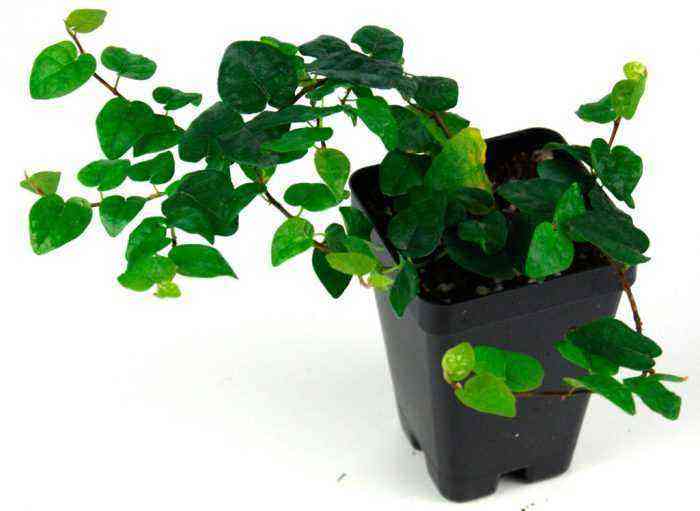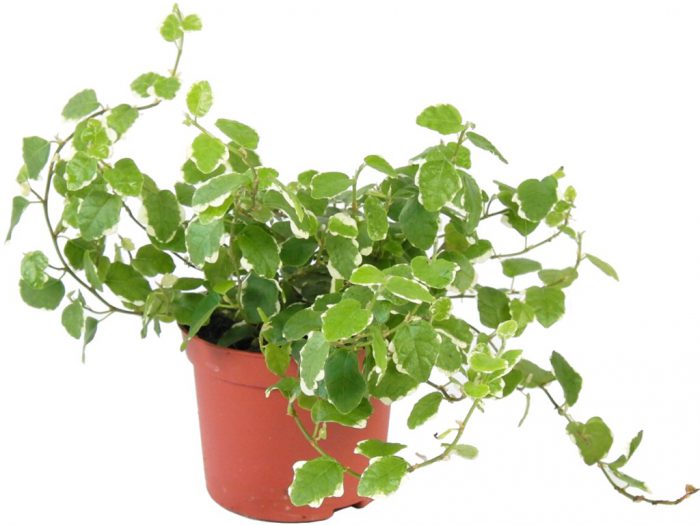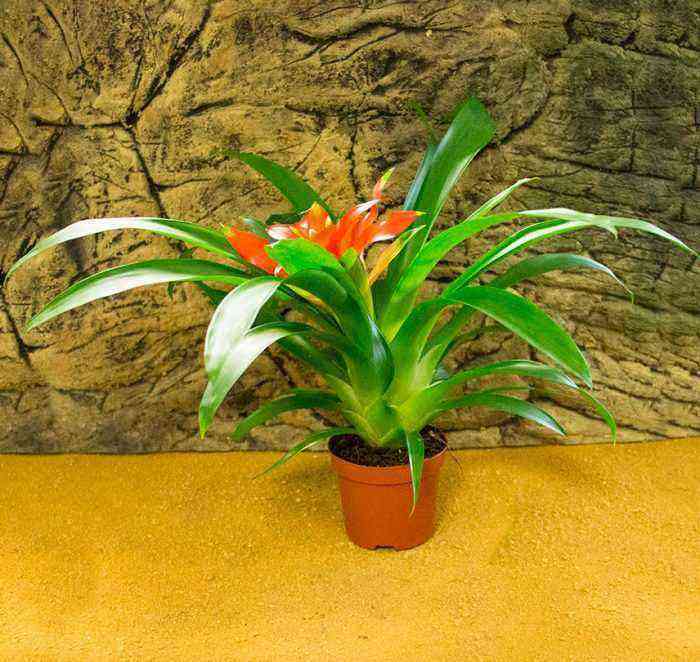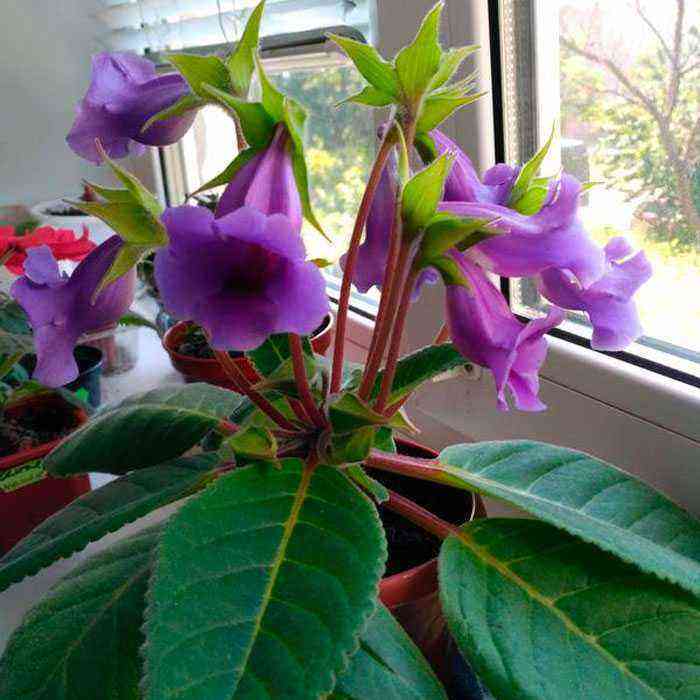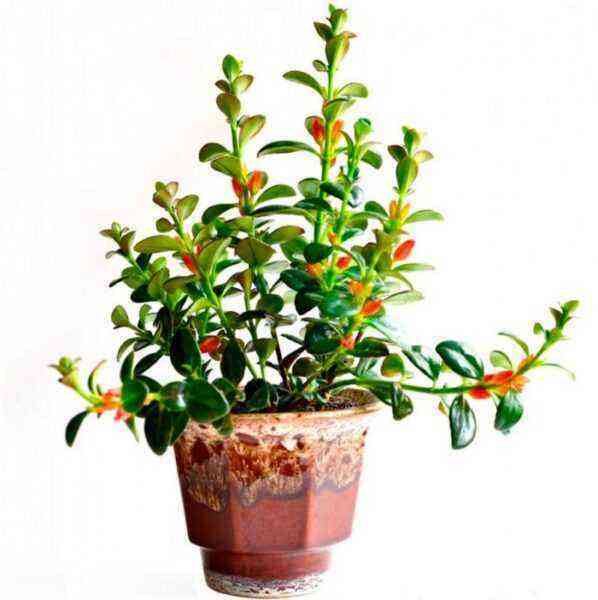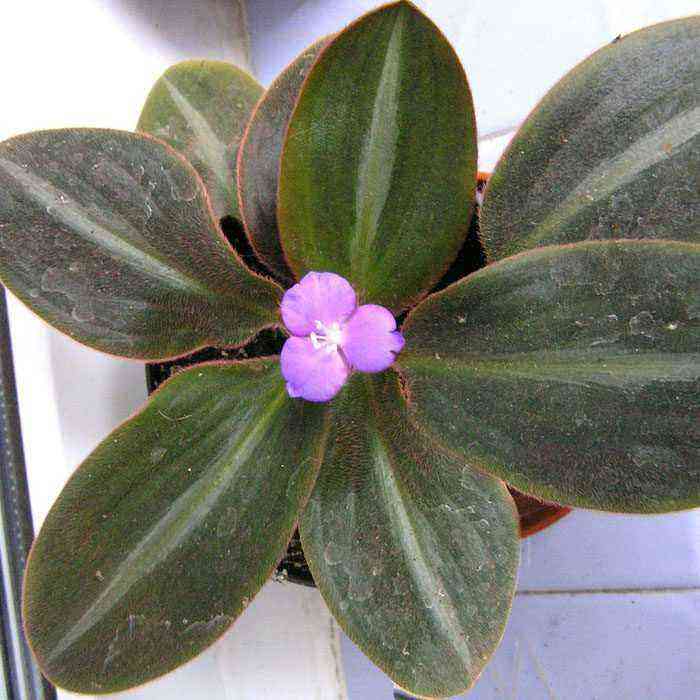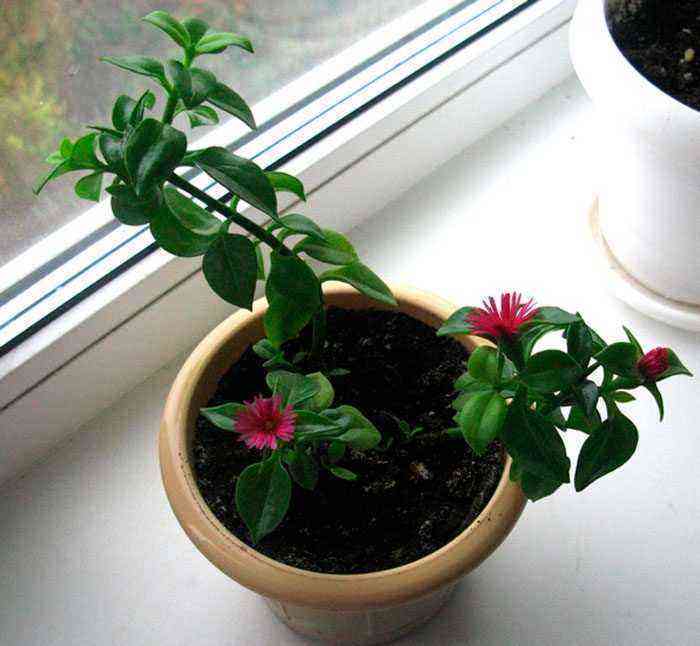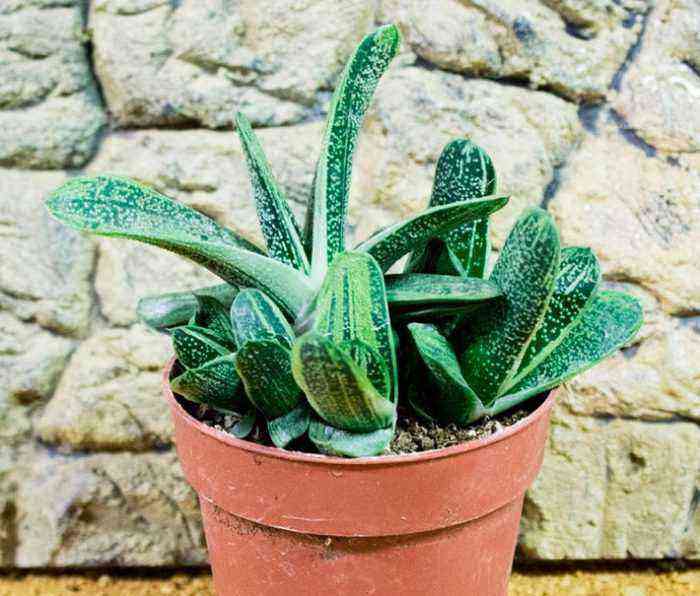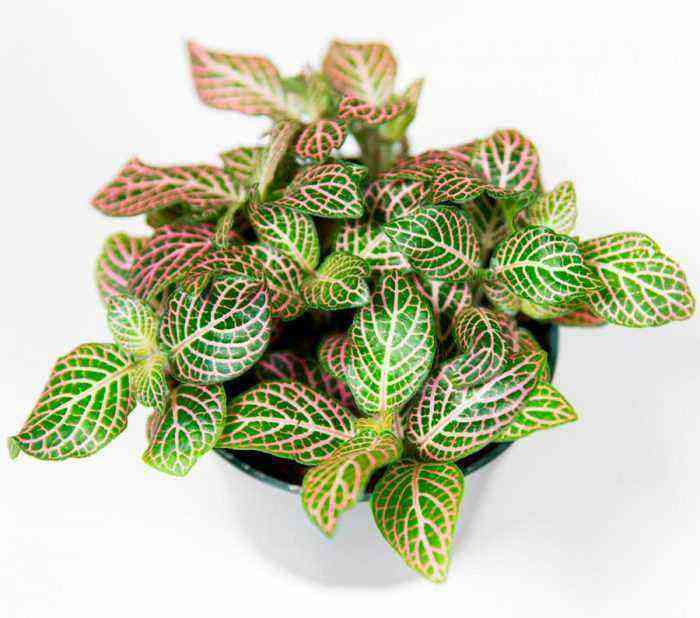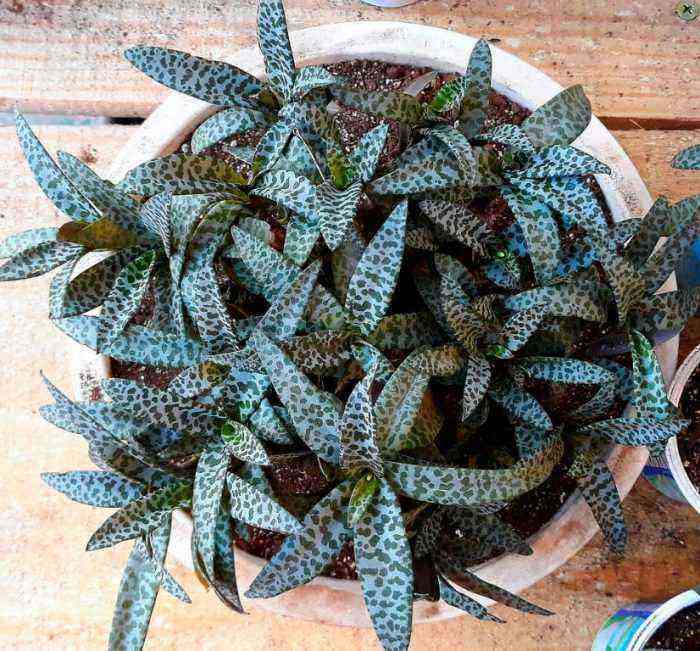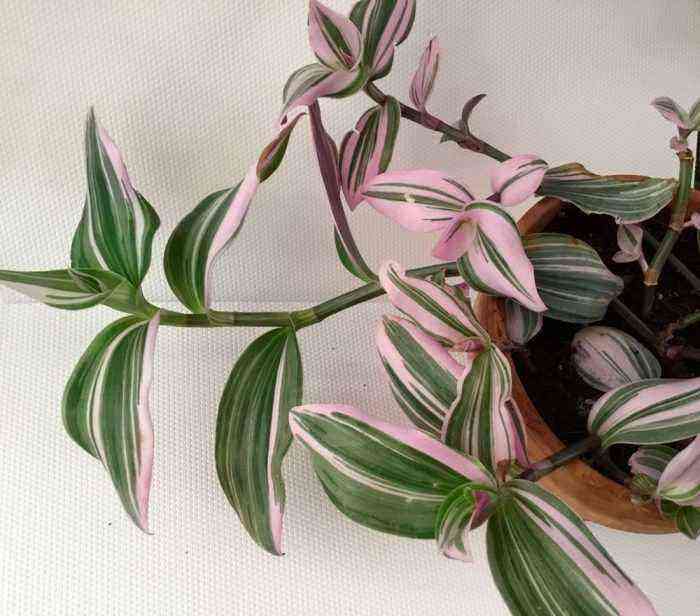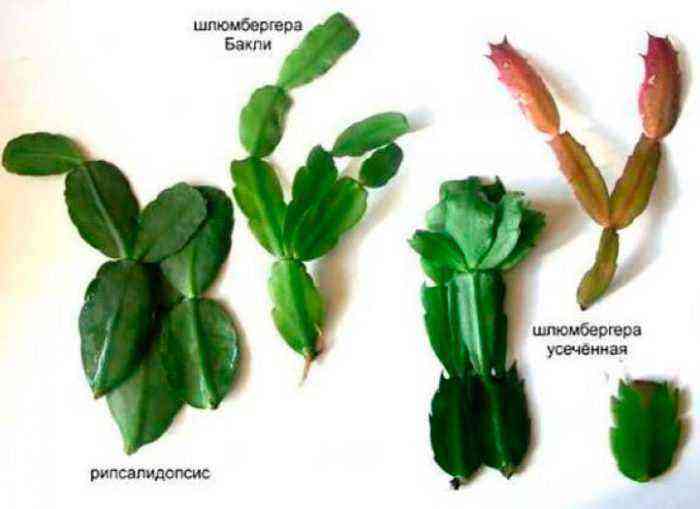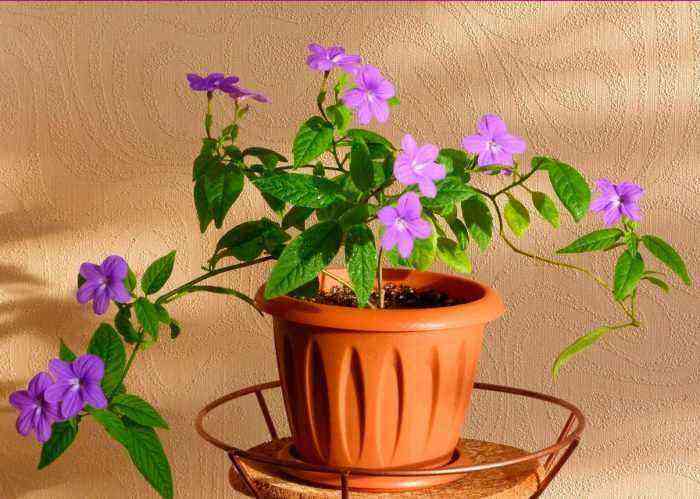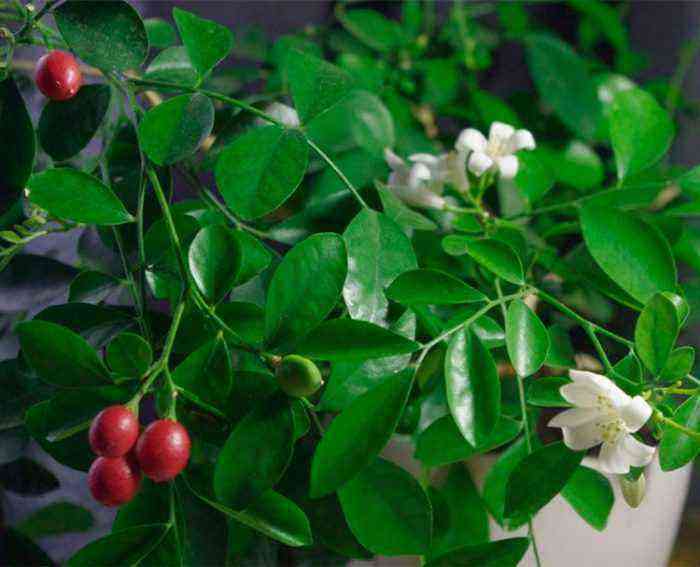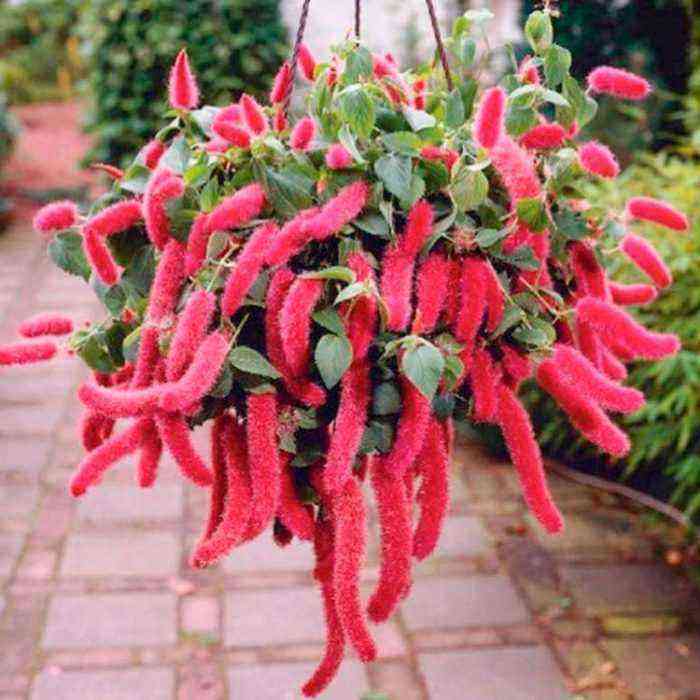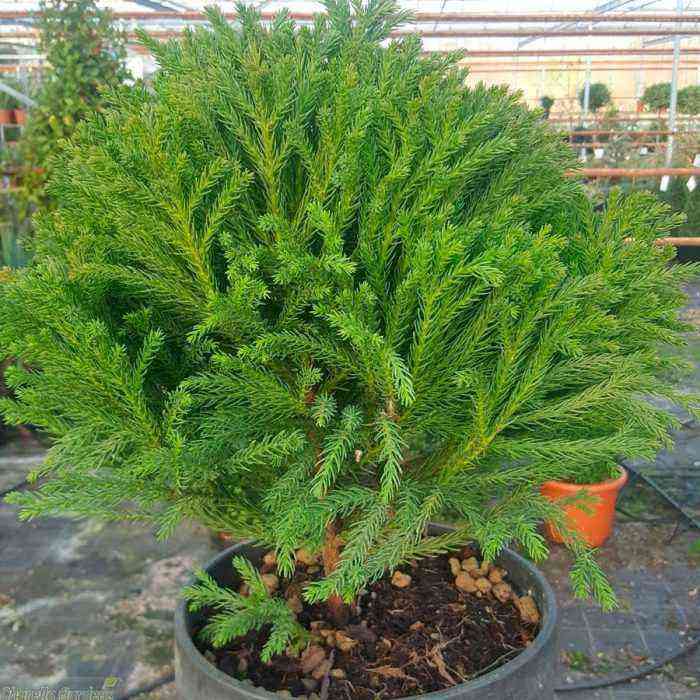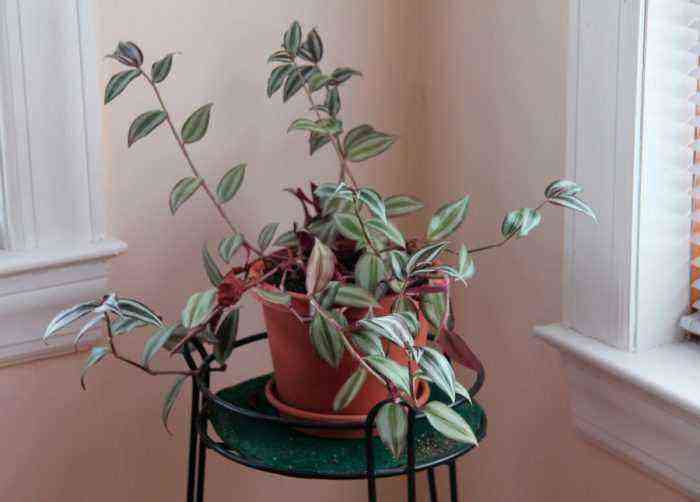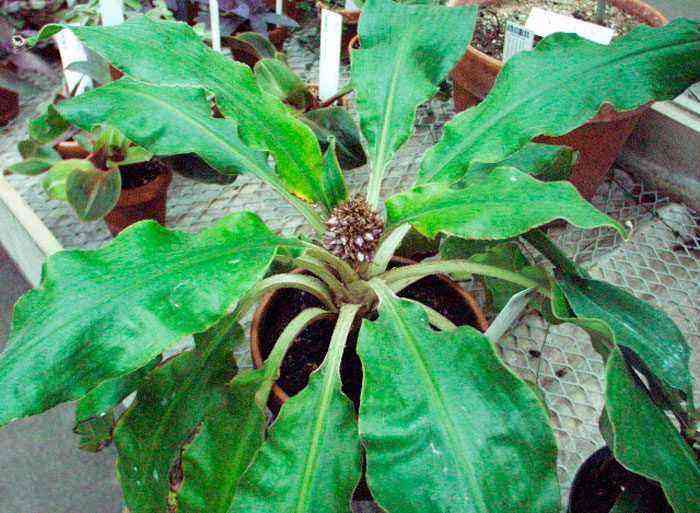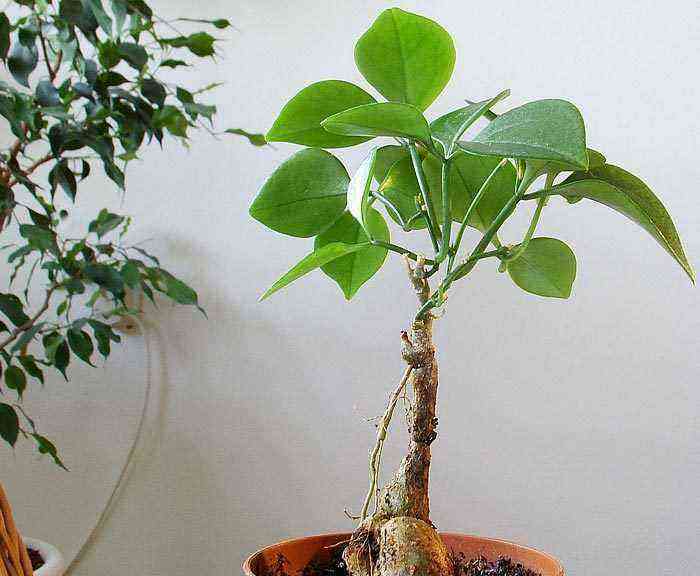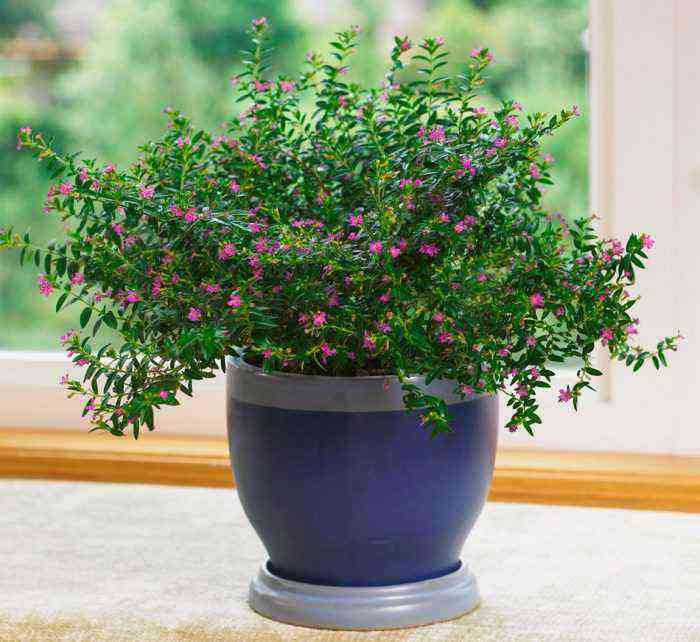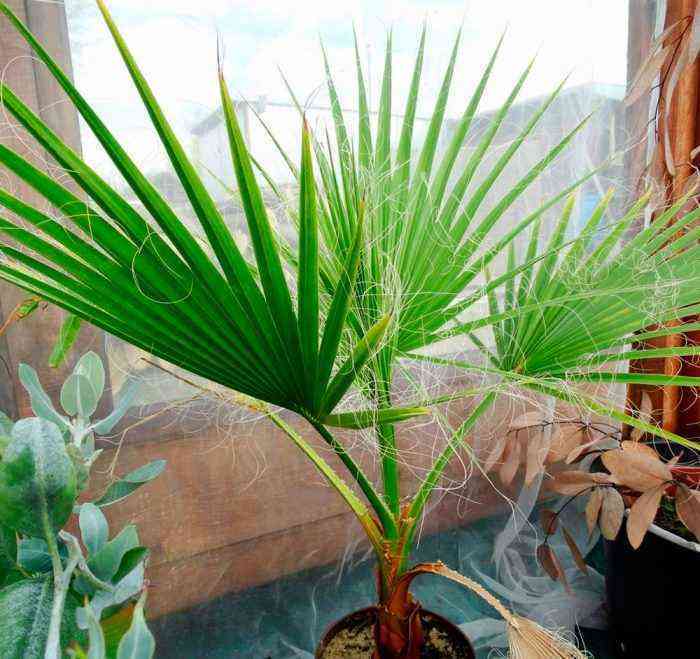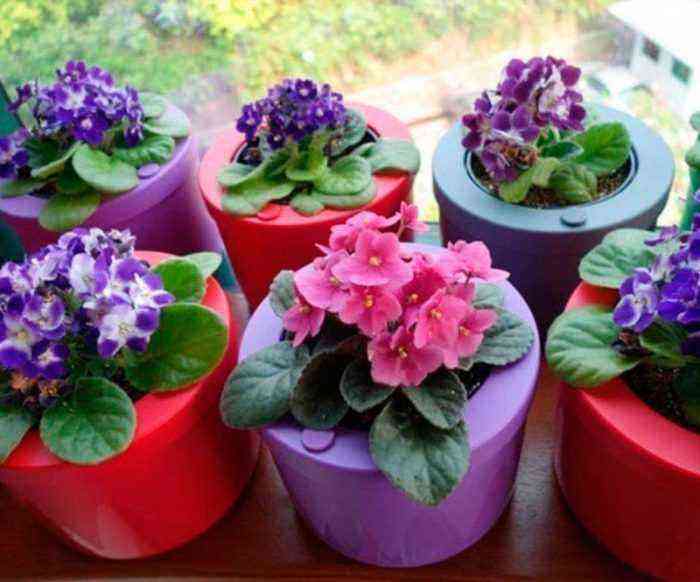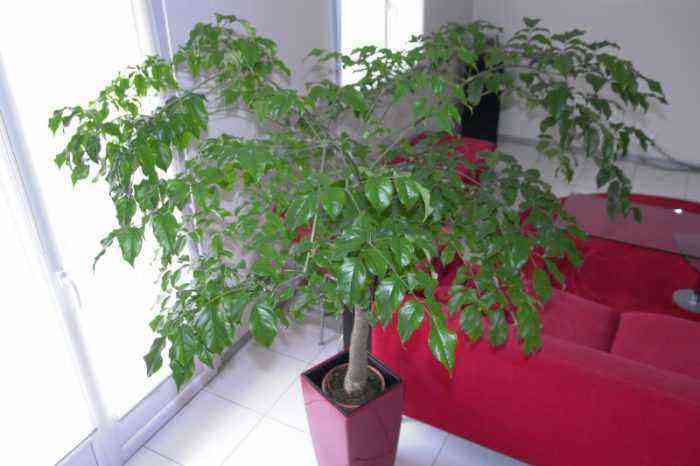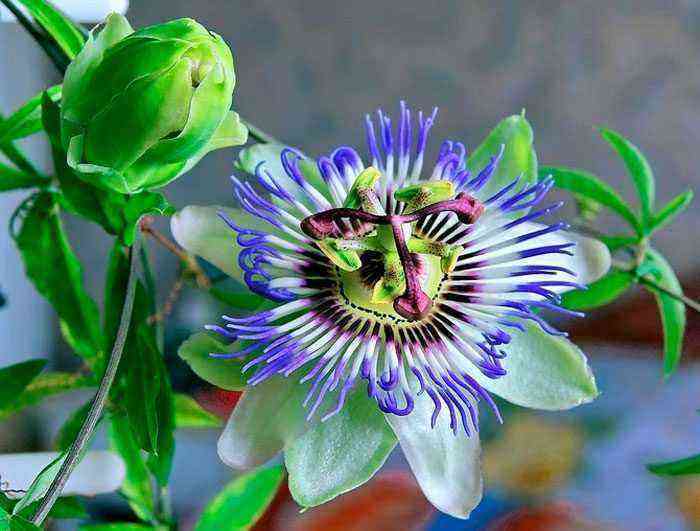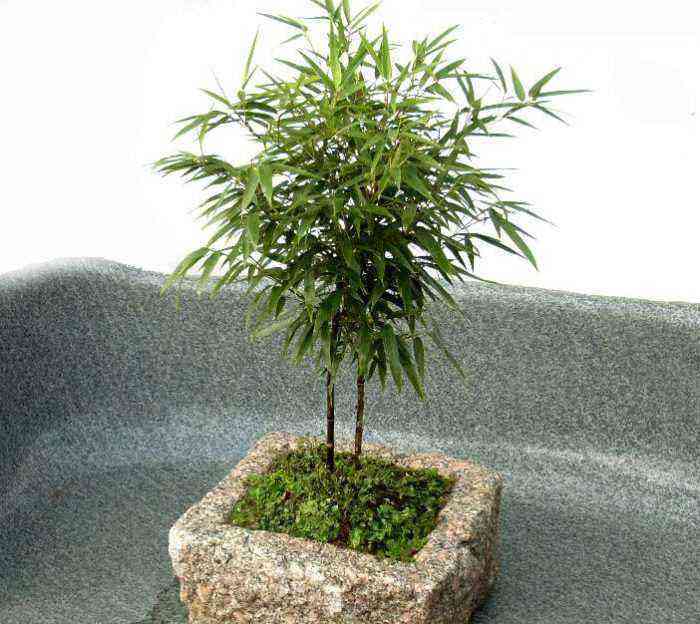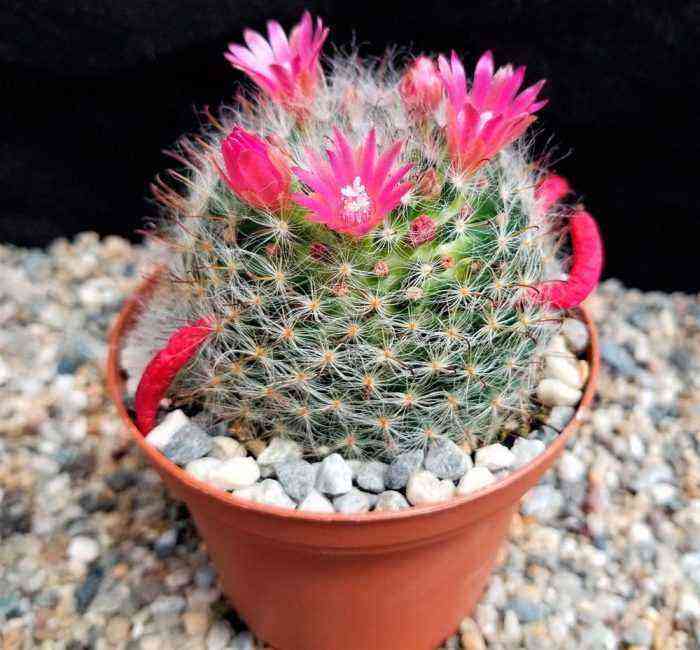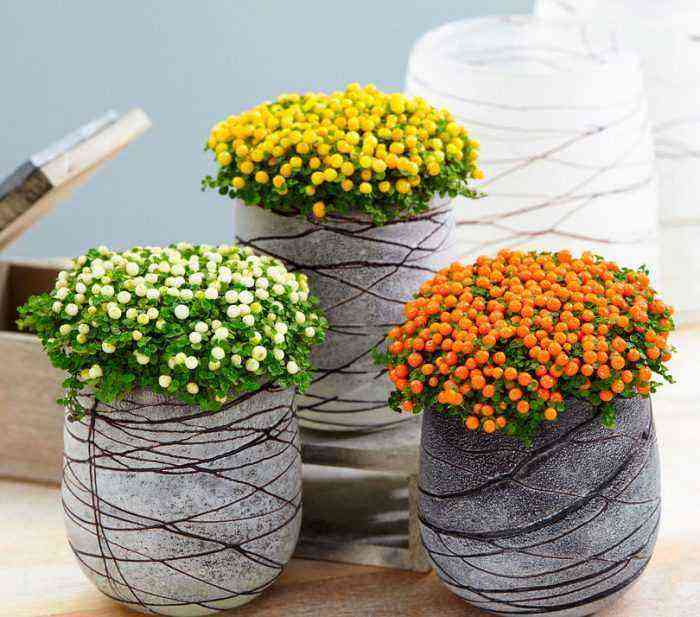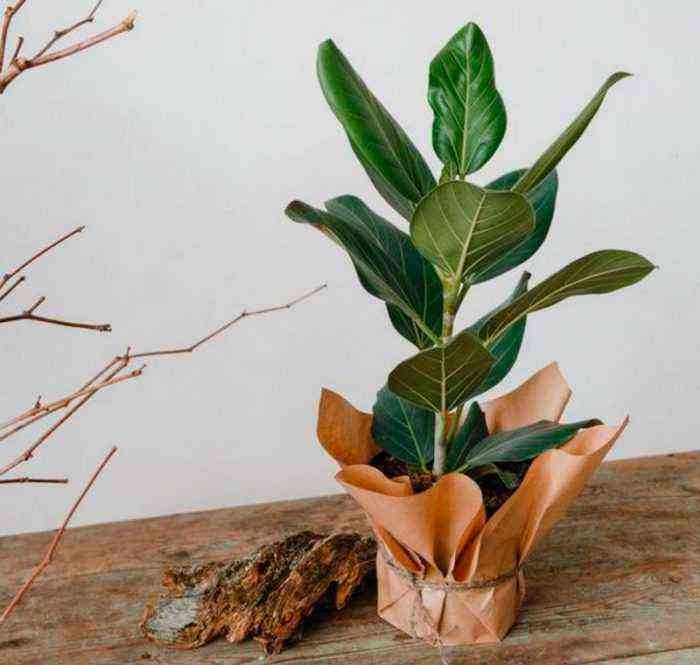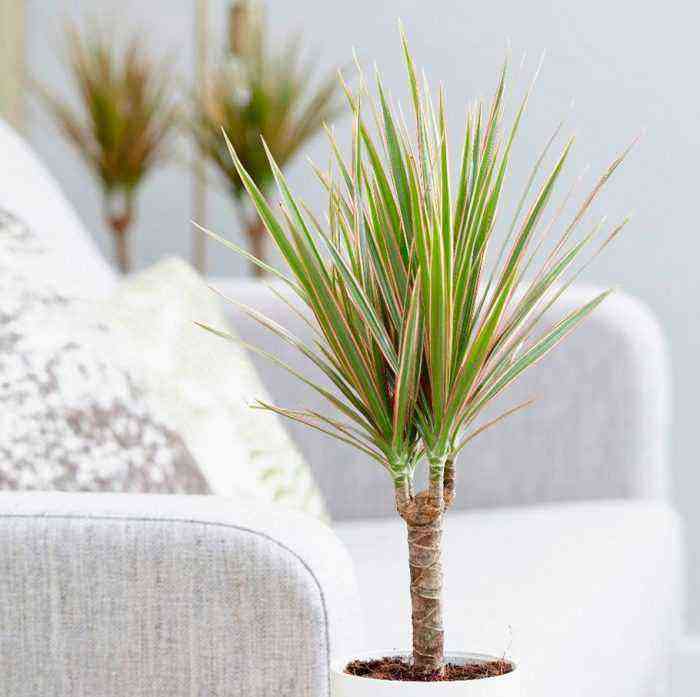Dwarf ficus (Ficus pumila) belongs to the genus Ficus and the mulberry family. It occurs naturally in the forests of Taiwan, Japan, China, and Vietnam.
This perennial herb is a ground cover or climbing plant. It is highly branched and has thin woody shoots. It can creep along the surface of the soil, climb the trunks of trees, clinging to the bark with airy enough thick roots that develop into internodes. Thus, 1 ficus can occupy an area of up to 4 square meters, covering it with a very dense carpet.
In a young specimen, alternate leaves reach 2 or 3 centimeters in length and have rather short petioles. Simple whole-edged leaves have an oval shape and a heart-shaped base. The dense, leathery surface of the foliage is wrinkled and bubbly. As the plant itself grows, its leaves grow, over time they reach a length of 5 to 7 centimeters. On the stems, the formation of pale green inflorescences-syconia occurs, which are berry-like and outwardly similar in shape to a pear. Their size is 5×3 centimeters. Ripe syconia changes its color to orange. When grown in an apartment, age shoots are not formed, and flowering does not occur.
At home, varieties with variegated foliage are most often grown. Most popular:
- Sunny – there is a white-cream intermittent and uneven border that runs along the edge of the leaf plate;
- Dorte – white-cream spots are scattered over the surface of the green leaf;
- White Sunny – differs from Sunny in that it has a continuous border around the edge.
Dwarf ficus care at home
Various varieties and varieties of this plant are used for growing as an ampelous plant in hanging baskets, and also form dense vertically arranged columns from them, with special supports come to the rescue. The very care of the dwarf ficus is quite simple, you just need to comply with a number of simple requirements.
Illumination
This plant needs bright, but diffused light. However, even in direct sunlight, it feels quite comfortable. Varieties with green leaves can be placed in partial shade near a north-facing window or in the back of the room. Insufficient lighting will cause the leaves to be crushed, and the stems will be elongated. Varieties with variegated foliage need good lighting. So, if there is little light, then their drawing will fade, and then completely disappear.
Temperature conditions
In summer, the plant needs moderate temperatures between 18 and 25 degrees. In winter, ficus can withstand a temperature drop of up to 8 degrees, if the air humidity is not high. And under such conditions, the ficus should be watered moderately.
How to water
He loves moisture very much, and therefore it must be watered abundantly and regularly. It is necessary that the substrate in the pot is slightly damp (not wet) all the time. If the soil dries up, then the ficus may die, because it has superficial, underdeveloped roots that cannot take the water remaining in the deep layers of the soil. However, overflow should also not be allowed, because rot on the roots may appear.
For irrigation, it is necessary to use exclusively soft, settled water, which should be at room temperature and not contain chlorine.
Humidity
At high air humidity, the plant actively forms air roots. They are necessary for the ficus in order to climb up the support. In this regard, if it is grown in this form, then regular spraying will be simply necessary both in the summer and during a warm winter.
If it is grown as an ampelous plant, then there is no need for regular spraying. However, experts advise such a plant to have a warm shower once a week. This will wash away the accumulated dust and refresh the plant.
Earth mixture
Suitable soil should be neutral (pH 5,5-7,5) and nutrient-dense. For planting, you can purchase a ready-made universal soil mixture for indoor plants. If desired, you can cook it with your own hands; for this, sod, leaf and peat soil, as well as coarse sand, taken in equal proportions, are combined.
fertilizers
Dwarf ficus is fed only during intensive growth, 2 times a month. For this, liquid fertilizers are used for decorative deciduous plants. In winter, fertilizers are not applied to the soil.
Transplant Features
Young specimens need an annual transplant. It is held in spring, with larger pots. Adult plants are transplanted less often (1 time in 3 or 4 years). A suitable pot should be wide and short.
Methods of reproduction
The plant can be propagated quite easily with apical cuttings. For their rooting, clean water, an earth mixture, or moistened vermiculite can be used. Also propagated by layering. To do this, fix the stem node on the soil surface by placing a small pot next to the plant.
Pests and diseases
On a dwarf ficus, pests are very rare guests. However, if the plant is kept at low air humidity and in the heat, then a spider mite can settle on it. If pests are found, the ficus needs to arrange a shower using water at a temperature of 40–45 degrees. If there are a lot of leaves, then you need to carry out the following procedure. Put some hot water in a deep basin and rinse all the stems of the plant thoroughly in it. It is necessary to rinse the ficus several times until the pests disappear.
Most often, the plant is sick due to violations of the rules of care:
- ficus dropped foliage – too cold, draft, overflow or little light;
- the leaves wrinkled and dry up – due to burns by direct rays of the sun or as a result of drying out the soil, as well as with too low humidity;
- the leaves turn yellow and die off – needs feeding, root rotting has begun as a result of overflow, or the soil mixture is too dense, or maybe sour.
If the plant has dropped all the foliage, this means that the environmental conditions are unfavorable for its growth, or they have changed dramatically.
